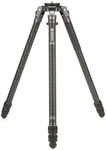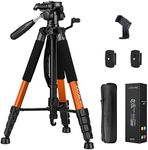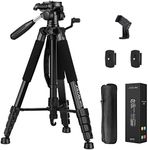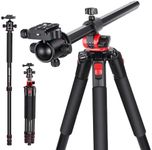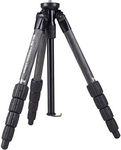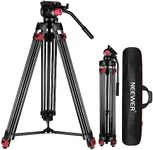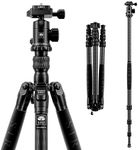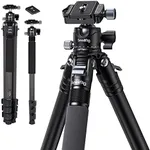Buying Guide for the Best Camera Tripods
Choosing the right camera tripod can make a big difference in your photography or videography experience. A tripod helps keep your camera steady, allowing for sharper images, smoother videos, and more creative possibilities like long exposures or self-portraits. When picking a tripod, it's important to think about where and how you'll use it, what kind of camera you have, and how much weight you're willing to carry. Understanding the key features will help you find a tripod that fits your needs and makes your shooting process easier and more enjoyable.MaterialThe material of a tripod affects its weight, durability, and stability. Most tripods are made from aluminum or carbon fiber. Aluminum tripods are generally heavier but more affordable and sturdy, making them good for studio or stationary use. Carbon fiber tripods are lighter and easier to carry, which is great for travel or outdoor photography, but they tend to be more expensive. If you plan to move around a lot or hike with your gear, a lighter material is better. If you mostly shoot in one place, a heavier tripod can offer more stability.
Maximum HeightMaximum height refers to how tall the tripod can extend, including the center column. This is important because it affects your shooting comfort and perspective. Shorter tripods are more portable but may require you to bend down, which can be uncomfortable for long periods. Taller tripods let you shoot at eye level, which is often more comfortable and versatile. If you often shoot standing up or want flexibility in framing, look for a tripod that extends to at least your eye level. If you mostly shoot from low angles or need something compact, a shorter tripod may be enough.
Minimum HeightMinimum height is how low the tripod can go, which is useful for macro photography, low-angle shots, or shooting from the ground. Some tripods allow the legs to spread wide or the center column to be reversed for very low positions. If you plan to do close-up or creative low-angle work, check how low the tripod can go. If you mostly shoot at standard heights, this may be less important.
Load CapacityLoad capacity is the maximum weight the tripod can safely support. This includes your camera, lens, and any accessories. If you use a lightweight camera, most tripods will be sufficient. For heavier DSLR or mirrorless cameras with large lenses, you'll need a tripod with a higher load capacity to ensure stability and safety. Always choose a tripod that can handle more weight than your heaviest setup to avoid accidents and ensure steady shots.
Leg LocksLeg locks are the mechanisms that keep the tripod legs extended. There are two main types: twist locks and flip locks. Twist locks are turned to tighten or loosen, while flip locks are levers that snap open and closed. Twist locks are often slimmer and can be quicker to use once you get used to them, while flip locks are easy to see and operate, especially with gloves. Your choice depends on personal preference and how quickly you need to set up or adjust your tripod.
Head TypeThe tripod head is the part that holds your camera and allows you to adjust its position. Common types include ball heads, which offer quick and flexible movement, and pan-tilt heads, which allow more precise control over each axis. Ball heads are great for general photography and fast adjustments, while pan-tilt heads are better for video or situations where you need precise framing. Think about the type of shooting you do most often to decide which head type suits you best.
PortabilityPortability refers to how easy it is to carry the tripod, which depends on its weight and folded length. If you travel a lot or hike to your shooting locations, a lightweight and compact tripod is easier to bring along. If you mostly shoot close to home or in a studio, portability may be less important. Consider how much space you have in your bag and how far you'll need to carry your tripod.
